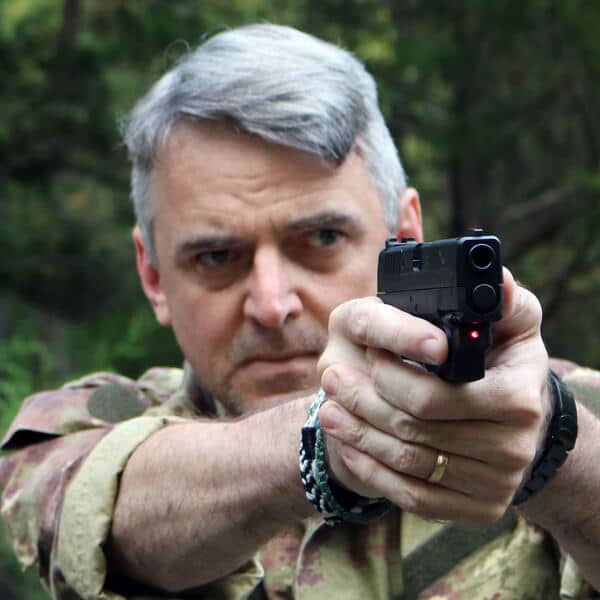B-52 Stratofortress — The BUFF Strategic Bomber
October 28th, 2023
8 minute read
The B-52 Stratofortress has been an instrumental part of the U.S. Air Force strategic bomber inventory since it entered service in the 1950s. Part of the Nuclear Triad, the B-52s have been integral in preserving peace around the world. Development began on these planes shortly after World War II as a bomber that could carry nuclear and conventional gravity bombs across very long distances. Since then, the aircraft have been updated to include the ability to launch cruise missiles.
Used in many conflicts, including the Vietnam War, Operation Enduring Freedom and more, the B-52 bomber is a capable aircraft that still helps defend the United States today. In this article, Dr. Will Dabbs gives us a glimpse into the history and capabilities of the B-52 bomber force.

The CALFEX was a perennial crowd-pleaser. CALFEX is milspeak for “Combined Arms Live Fire Exercise”. Think of it like a rodeo, except with helicopter gunships and rocket artillery.
At Fort Sill, Oklahoma, pre-9/11 the world was a much simpler place. Fort Sill is the home of the Field Artillery — the King of Battle. The sheer volume of destruction housed in the place is honestly kind of tough to imagine.

Every six months we got to exercise that chaos. I was an Army aviator. I flew the CALFEX in both OH-58A and CH-47D aircraft. However, during one iteration my family came to visit as the event was open to the public. I put someone else on the schedule to fly and queued up alongside the civilians.
There was legit no better community goodwill outreach than this. We opened the gates to post and let anybody who wished to watch come sit on a giant set of bleachers. For that brief afternoon, normal Americans got to see what they got for their taxes. It was an epic show.

The infantry’s M16’s, M60’s, and anti-tank guided missiles all synergistically crackled like Satan’s popcorn. We moved up through various types of tube artillery, tanks, M270 MLRS (Multiple Launch Rocket Systems — the HIMARS that is currently kicking Russian butt in Ukraine, descended from the M270 MLRS), and attack helicopters. There were usually some attack jets like AV-8B Harriers or A-10’s thrown in for flavor.
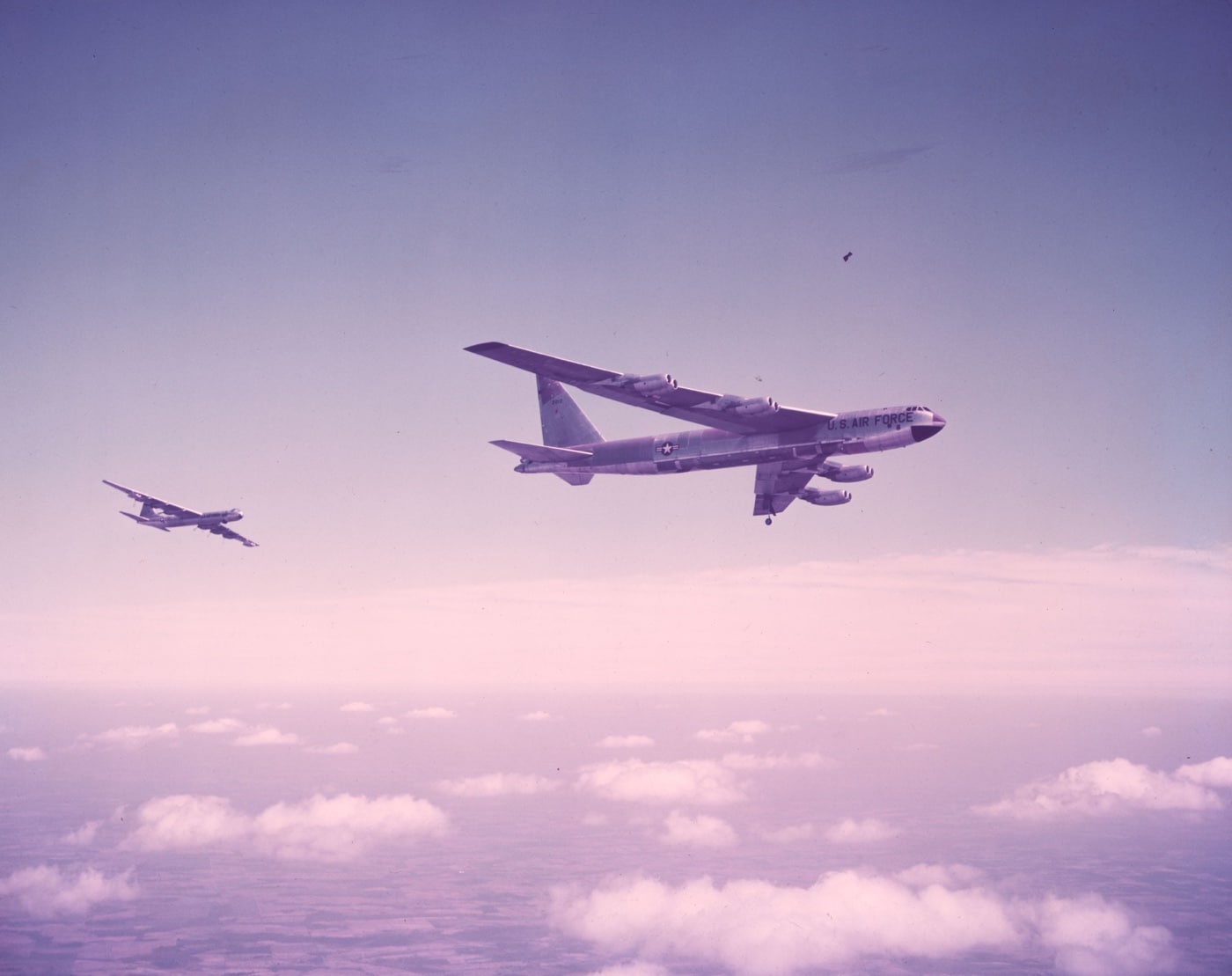
Each weapon system got to strut its stuff, throwing live rounds downrange with an announcer coordinating everything. That guy was just some captain with a pleasant singing voice, but he tossed in helpful statistics and kept everybody both educated and enthralled. Once all those weapons were exercised, we were tired. The noise and shock effect dulled our senses. We were a long ways from where everything was going off, yet we still felt the thumps. I recall being very impressed with the volume of sheer unfiltered destruction. And then the announcer directed our attention to a speck in the distance.

The B-52 Stratofortress was flying surprisingly low level. As a helicopter guy, I was impressed. The pilot rolled the enormous plane on a course that would take him from right to left, passing in front of the viewing stands. Once he got aligned, the bomb bay doors opened and little black specks began streaming out. Each tiny black speck was an Mk 82 500-lb. general-purpose bomb, and it looked like that plane was carrying a thousand of them. They seemed to go on for days.
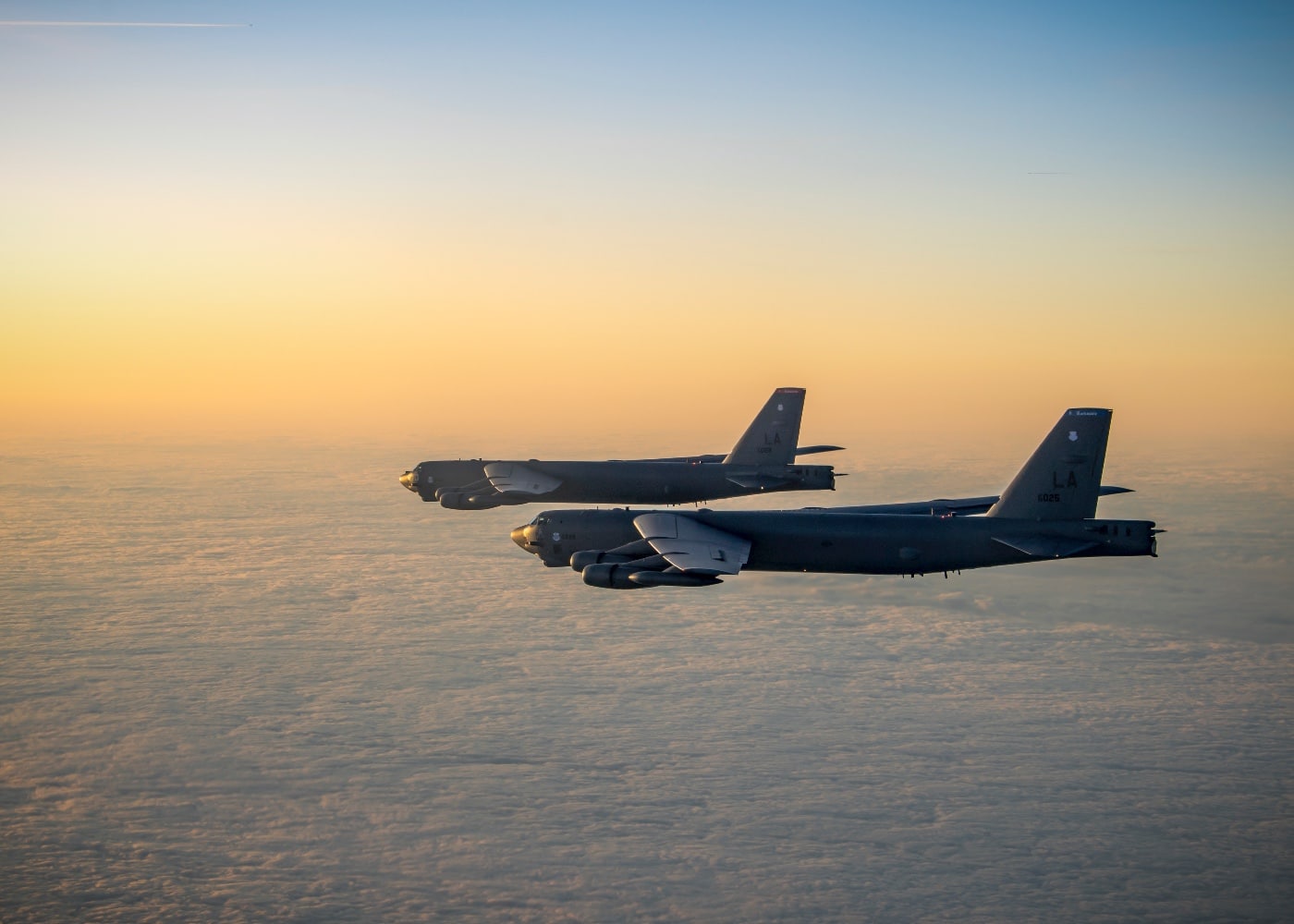
The gigantic bomber reached the far left side of the range and banked away as the first bomb went off. And then every other Mk 82 followed in sequence. Despite being several thousand meters from the impact zone, the shock waves took our breath away. I had never imagined such power existed on planet Earth. That was my shocking introduction to the BUFF.
An Antiquated Acronym
BUFF stands for Big Ugly Fat Fellow, only the last F isn’t necessarily “Fellow.” Use your imagination and think like a soldier.

The Boeing B-52 Stratofortress first flew on the 15th of April, 1952. It was the heir apparent following the B-17 Flying Fortress and the B-29 Superfortress, two other fine Boeing products. The B-52 is a brute-force instrument. Configured for combat, the BUFF can carry some 70,000 lbs. worth of weapons with an unrefueled range of 8,800 miles. Considering the B-52 is 1950’s technology, it is astounding the plane has aged so well and is still in the Air Force.
A total of 744 airframes were built. Of those, 72 remain operational today. The B-58 Hustler, the XB-70 Valkyrie and the B-1 Lancer all came and went, yet the BUFF soldiered on. By the time the design is finally retired, it will have served operationally for nearly a century. No other military aircraft on the planet even comes close.

The B-52 sports eight Pratt & Whitney TF33-P-3/103 turbofan engines. Each jet engine produces 17,000 lbs. of thrust. Though designed to penetrate Soviet airspace to deliver oversized thermonuclear weapons, the B-52 has likely delivered more tonnage of conventional ordnance than any other combat aircraft in the world. The plane was used to deliver precision-guided weapons in enormous quantities throughout the Global War on Terror. However, the real battlefield for the B-52 was North Vietnam, Cambodia and Laos. During the Vietnam War, massed B-52 raids laid waste to terrain grid squares at a time.
Boeing B-52 Stratofortress Brings the Pain
The baptism by fire of the B-52 in Vietnam occurred in March of 1965 during Operation Rolling Thunder. The first Arc Light massed B-52 assault took place on 18 June 1965, as part of that overarching enterprise and included some 30 of the heavy bombers. A group this size typically dropped from between 19,000 and 22,000 feet and obliterated an area roughly one-by-two miles on the ground.
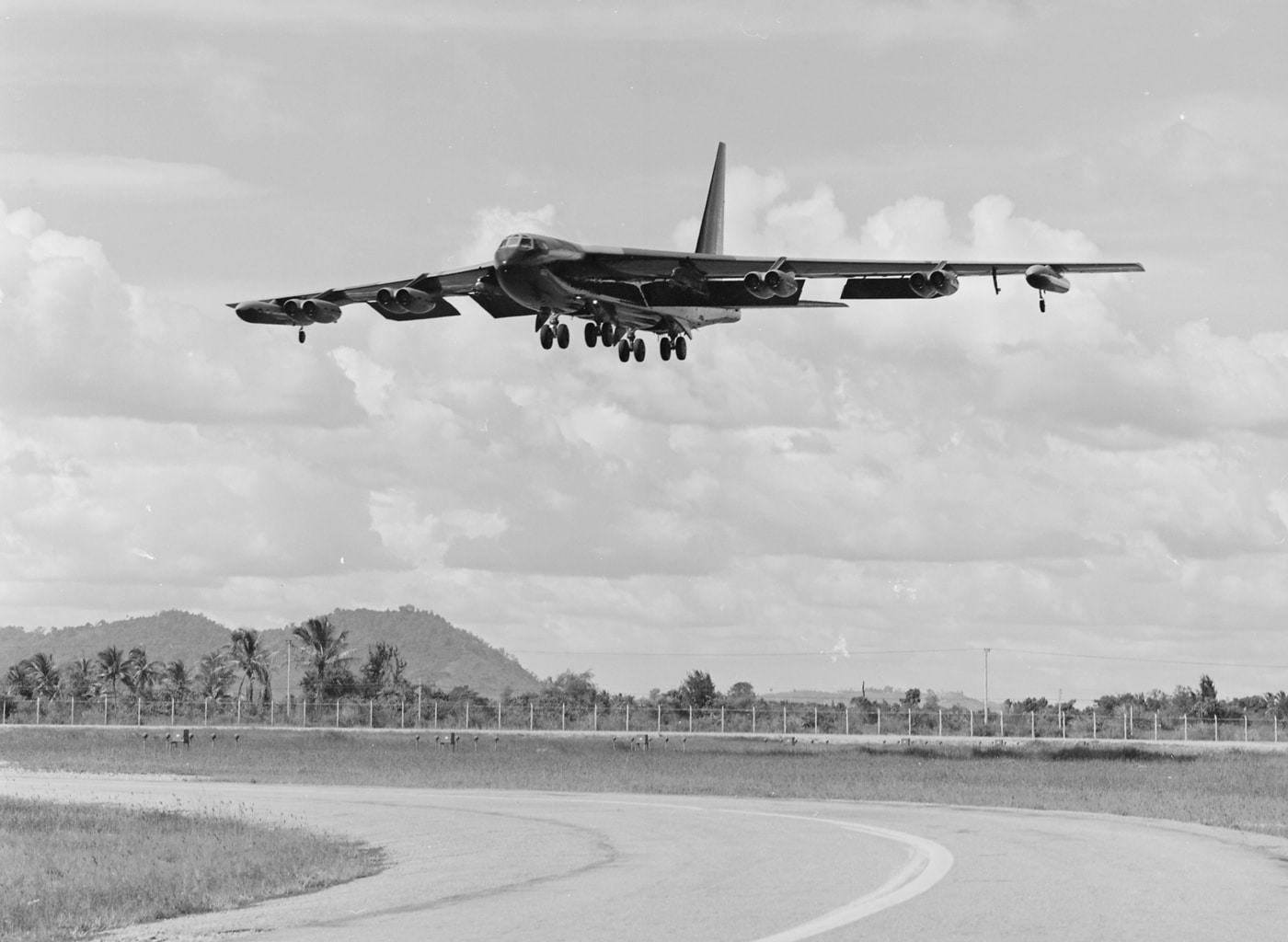
When optimized for the conventional attack role, the latest version of the nuclear bomber, the H model, carries a whopping 108 Mk 82 500-lb. bombs. This was the machine that so awed me that day at Fort Sill. The B-52 was capable of targeting by a variety of onboard means. However, oftentimes the Arc Light raids were controlled from ground radar stations in Laos.

My father-in-law was a radar officer in the Air Force and explained the details to me. Radar operators would follow the progress of the aircraft, tweak their attack runs along a predetermined radial, and call bombs away. Using this technology, the BUFFs could conduct bombing operations in literally any weather day or night. I literally cannot imagine how horrible that might be on the receiving end.
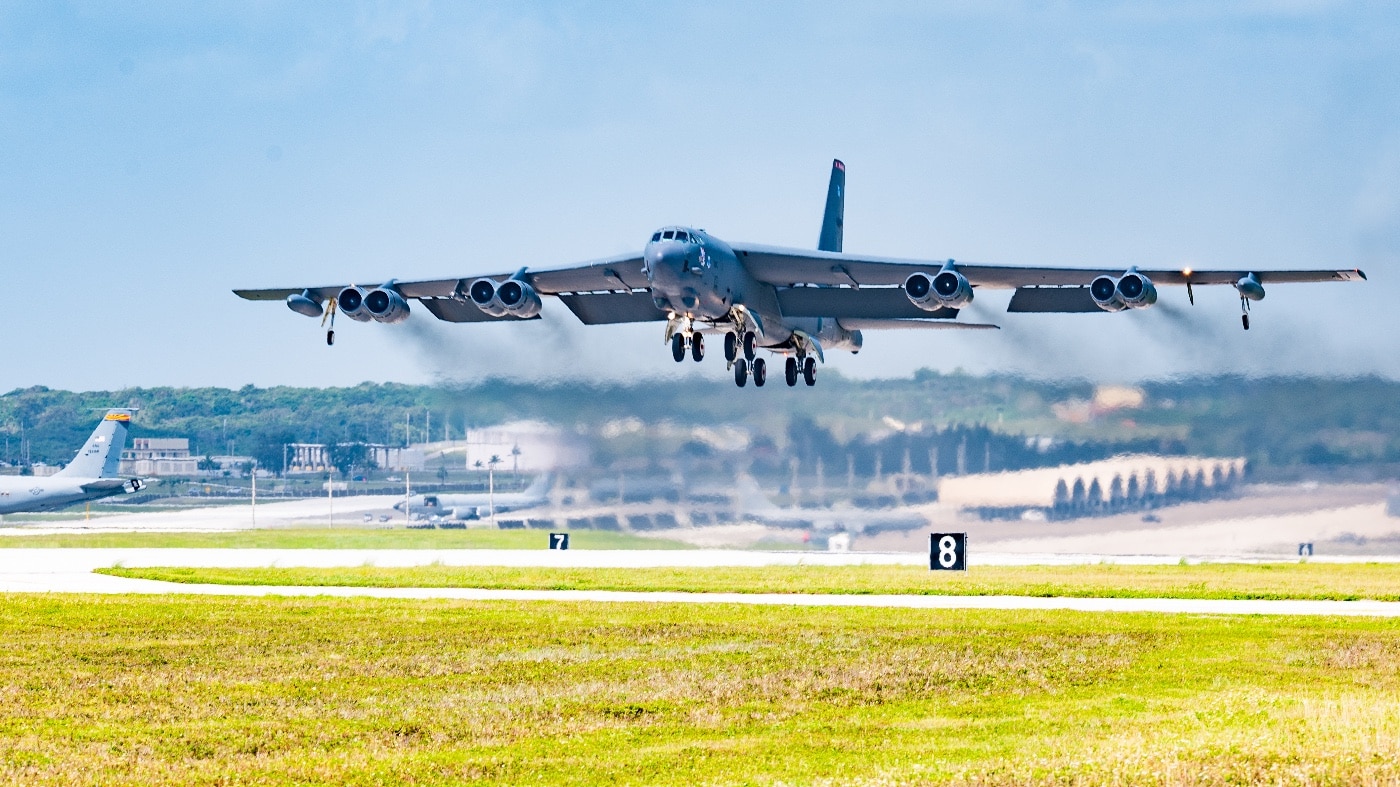
Early B-52 D-models carried a quad mount .50-caliber radar-guided defensive system in the tail. B-52 tail gunners accounted for three North Vietnamese MiG-21 fighters downed during the course of the war. A total of 31 B-52’s were lost due to combat action in Vietnam. Later models carried an M-61 Vulcan in the tail mount. Current variants have deleted their tail guns.
Technical Specifications of the B-52H Model
- Length: 159′
- Wingspan: 185′
- Height: 40′
- Empty Weight: 185,000 lbs
- Max Takeoff Weight: 488,000 lbs
- Fuel Capacity: 47,975 gallons
- Engines: 8x Pratt & Whitney TF33-P-3/103 turbofans
- Max Speed: 650 mph
- Cruise: 509 mph
- Service Ceiling: 50,000 feet
- Combat Range: 8,800 miles
- Payload: 70,000 pounds
Denouement
NASA flies the B-52 as a boost vehicle to carry experimental high-performance research aircraft to high altitudes for launch. A B-52 launched the X-15 rocket planes on their record-setting speed runs. In the era of stealth aircraft and Information Age tech, the B-52 still remains a serious player on the battlefield.
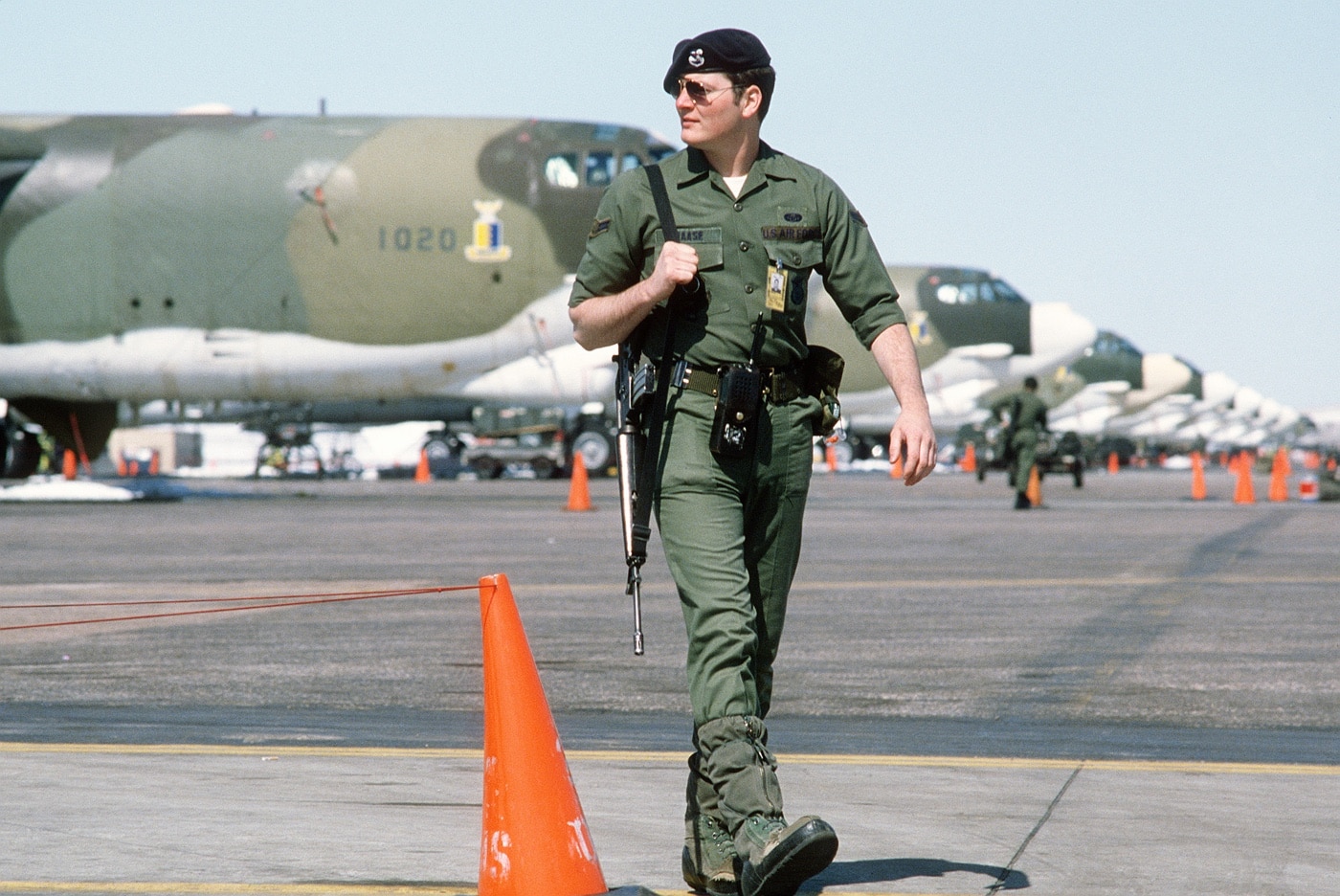
During Operation Desert Storm, B-52’s flew 1,620 sorties and dropped 40% of the ordnance expended by coalition forces in combat. During the opening strike of the war, B-52H Stratofortresses based at Barksdale Air Force Base in Louisiana flew a round trip of 14,000 miles against targets in Iraq. This operation set a record for the longest combat mission in aviation history. The plane’s five-man crews stayed aloft for some 35 hours. Using precision-guided standoff missiles, the BUFFs successfully neutralized 90% of their assigned targets.

Of the three primary heavy bombers in use at the turn of the century (the B-52, the B-1B and the B-2 Spirit), the B-52 had the best operational readiness rate (80.5%). At the time, the B-52 cost $72,000 per flight hour to operate. While that is an astronomical number, it is still roughly half of the operating cost of a B-2 stealth bomber.
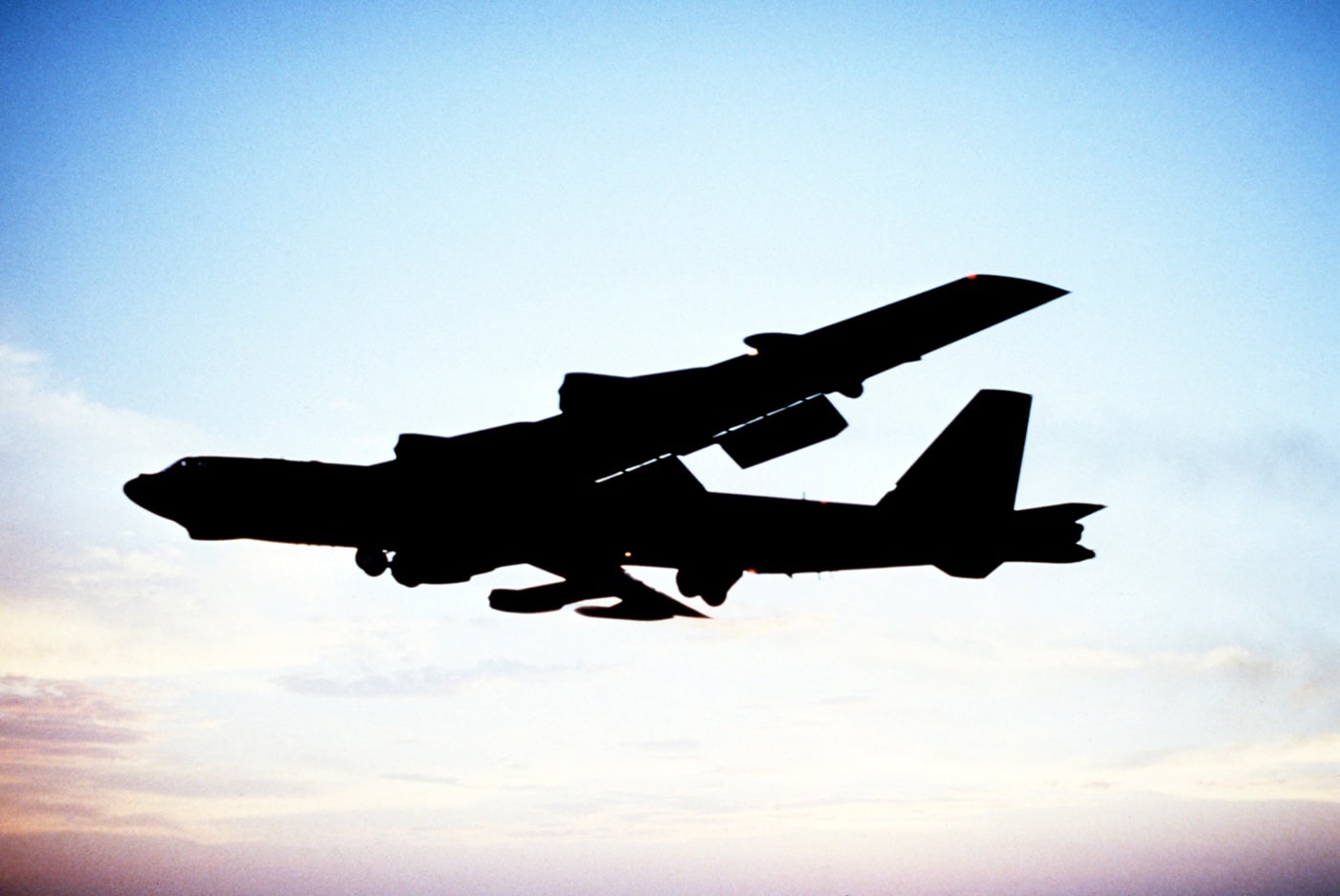
The B-52 Stratofortress is one of the greatest success stories of the American military. Designed right after World War II, the BUFF still fills a tactical niche even today that no other subsequent aircraft can manage. Many combat planes are faster, and stealth does seem to be more than a passing fad. However, 108 Mk 82 500-lb. bombs all at one time certainly will get someone’s attention. The BUFF is an undeniably bad machine.
Editor’s Note: Please be sure to check out The Armory Life Forum, where you can comment about our daily articles, as well as just talk guns and gear. Click the “Go To Forum Thread” link below to jump in!
Join the Discussion
Continue Reading
Did you enjoy this article?

 469
469





